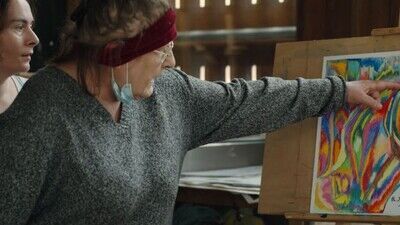The ship is essentially a floating day center where psychiatric patients visit and participate in various forms of art therapy that allow them to gradually work through their problems through activities ranging from painting to dance to creating and programming their own film club. These activities are overseen by caregivers who gently encourage the patients to discuss the ideas driving their various creations as a way of helping them to connect with their issues. For those who do not want to participate in these activities, the barge simply presents a kind of community where they can go, have a cup of coffee and interact with other people at their own pace without fear of judgement.
In approaching his subjects, Philibert utilizes a similar non-intrusive approach that allows them to communicate and express themselves at their own pace and emphasizes how the program tries to eliminate the divide between the patients and the staff—in most cases, it is hard to tell who is who until they begin to speak. As a result, he captures a number of extraordinary moments throughout the film. In a captivating early sequence, one patient sings the song “La Bombe Humaine,” a 1979 hit for the French group Telephone and although the song itself is on the dark side, he clearly receives some kind of cathartic release from his performance that is hard to deny. In another, an older female patient insists upon the idea that she should be allowed to conduct a weekly dance class. The caregivers go about letting her have her say, respecting her intense feelings on the subject while gently trying to suggest that this might not be the best of ideas.
Like the program it is chronicling, the film takes care to see its subjects as people as opposed to a mere collection of symptoms and they in turn open up to the cameras in ways that are disarmingly raw and honest without ever coming across as exploitative. One of the most fascinating on display is Frederic, a bohemian type who at first comes across like he might be one of the caregivers until he begins talking at length about his belief that he is a reincarnation of Vincent Van Gogh and that Wim Wenders used his life as the inspiration for “Paris, Texas,” using the works of these artists as a way to help him process the experiences of his life. In an even more wrenching sequence, a woman talks about the child that was taken away from her more than a decade earlier and her current attempts to rebuild that relationship. The aforementioned singer returns later on and frankly admits that while the art therapies are undeniably helpful, it is the medications that he takes that prevent him from jumping in the river.

